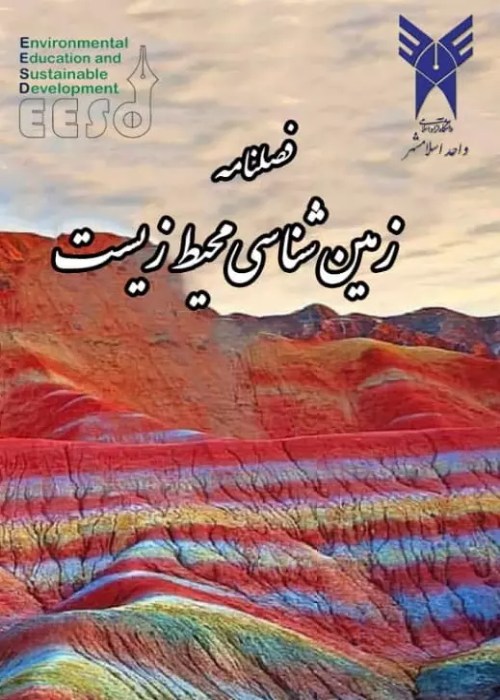Investigating the amounts of sediment pollutants of the Karaj River in the area of Eslamshahr (southern Tehran) and their adverse effects on the surrounding environm
Author(s):
Abstract:
Eslamshahr is located in the south of Tehran, bounded by Tehran in the north, by Rey County in the east, by Robat Karim in the south and by Shahriar County in the west. The most important river is named the Karaj River. In the research sediment samples were analyzed to determine the concentration of Ni, Cr, Cd, Zn, Pb, Cu, As , and Fe elements. The sediments of the Karaj River are contaminated by zinc, copper, and in some stations by lead and arsenic. The Conclusion of the analysis of the principle component is compatible with the results from the cluster analysis and based on the statistical analyses performed, one can say that iron, nickel, chrome and zing have a common source (natural). Common sources (anthropogenic) are found for copper and arsenic as well as a separate source (anthropogenic) for cadmium. The results show that not all the elements are enriched in the stations. According to the results from the geoaccumulation Index, the amounts of zinc, copper and nickel are in the polluted range at some stations and in the non-polluted to medium pollution ranges at other stations. The pollution of cadmium, lead and arsenic are in the medium to strong pollution range. The amount of chrome is also in the non-polluted range and at some stations in the medium to strong pollution range and at station 13 in the strong pollution range. The values for the degree of pollution show that cadmium has a very high pollution degree, chrome and nickel have medium pollution degrees, and copper, arsenic, lead and zing have considerable pollution degrees. The pollution factor is low to medium in all the stations. The possible source of zinc and copper elements is the household waste and wastewater discharge into the Karaj River. Increased concentrations of arsenic in Salur and Saveh Road stations indicates the impacts of agricultural pesticides and the increased concentration of lead is due to the vehicles passing by the river.
Keywords:
Language:
Persian
Published:
Iranian Journal of Environmental Geology, Volume:11 Issue: 38, 2017
Pages:
85 to 103
magiran.com/p1763184
دانلود و مطالعه متن این مقاله با یکی از روشهای زیر امکان پذیر است:
اشتراک شخصی
با عضویت و پرداخت آنلاین حق اشتراک یکساله به مبلغ 1,390,000ريال میتوانید 70 عنوان مطلب دانلود کنید!
اشتراک سازمانی
به کتابخانه دانشگاه یا محل کار خود پیشنهاد کنید تا اشتراک سازمانی این پایگاه را برای دسترسی نامحدود همه کاربران به متن مطالب تهیه نمایند!
توجه!
- حق عضویت دریافتی صرف حمایت از نشریات عضو و نگهداری، تکمیل و توسعه مگیران میشود.
- پرداخت حق اشتراک و دانلود مقالات اجازه بازنشر آن در سایر رسانههای چاپی و دیجیتال را به کاربر نمیدهد.
In order to view content subscription is required
Personal subscription
Subscribe magiran.com for 70 € euros via PayPal and download 70 articles during a year.
Organization subscription
Please contact us to subscribe your university or library for unlimited access!


